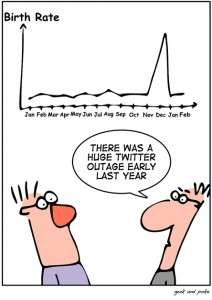Five Tips For Getting Started With Blog SEO — They Can't Read What They Can't Find
If a tree falls down in the forest and no one is around to hear it, did it make a sound? Some say yes, some say no and people with better things to do couldn’t care less. But what if we replace the tree with your company’s blog and the forest with the Internet? Now you’ve got a brain teaser worth considering. Your business can have the best, most compelling blog in the world, but if nobody ever reads it you aren’t making any noise. And if this is the case, what’s the point? Before someone can read your blog they have to find it. And the best way to make sure people find any kind of online content is to make sure it is search engine optimized. This month I had the privilege of attending Searchfest09 to hear what some of the industry’s leading SEO experts had to say about their industry (which is a LOT more interesting than you might think). SEO is part art, part science and part magic. It is something few will ever completely understand. Fortunately, you don’t have to become an expert to add some significant SEO punch to your corporate blog. There are a lot of great tools and techniques available that are easy to understand and implement.Getting Started with SEO for Blogs
Use WordPress — WordPress is the Microsoft (and Apple) of blog platforms. It is easy to use and there are a lot of SEO functions built right in. In addition, because WordPress is built on an open platform, there are literally thousands of people developing cool plug-ins that you can add to make your blog do all sorts of wonderful things. And there are LOTS of great SEO plug-ins available. If it is a corporate blog, consider making it a part of your company Website (like www.koifishcommunicaitons.com and www.koifishcommunications.com). This way, every time you add a new post, it helps your Website’s search ranking as well. Even if your blog is already established somewhere else, moving to the WordPress platform is probably a smart investment. Be forewarned, however, it is a very good idea to identify a few WordPress experts and resources before you embark on your journey. Understand the basics — Do a little reading about things like title tags, description tags and keyword tags. Learn how to develop an overall keyphrase selection strategy. If your company Website is search engine optimized, learn the keyphrases used there as well and integrate them appropriately. The better you understand these these basic principles, the better your blog SEO will be. Install good SEO plug-ins — The All In One SEO Pack is a plug-in that will allow you to customize the title, description and meta tags for each post. There are several other tools that will do the same thing as well, but this one seems to be one of the most popular. Also, investigate tools that will allow you to customize the URL of each post to include your chosen key words. Keep SEO in mind when writing copy — When writing for the Web, you are writing for two audiences — readers and the search engines. Your readers must always be your primary focus. They must find your content compelling and valuable. That said, there are a lot of simple things that can be done including:- Use Keyphrases repeatedly (at least three times) in your post
- Use titles and subheads to reinforce keyphrases and make your copy more readable
- Make title tags interesting and compelling
- Make sure the copy in your title tag and description tag appears in your body copy
- Invite readers to comment




 Soon after that tweet, I noticed I was being followed by @godaddyguy. The next day, GoDaddyGuy called and e-mailed. Suddenly, I got the feeling that SOMEONE at GoDaddy actually did give a damn! GoDaddyGuy and I have since exchanged e-mails and I genuinely believe that my suggestions about Twitter Link have been elevated to the development team and that an improvement is on the way. I also have acknowledgment that my two more serious issues with GoDaddy have been registered (thought I’m not holding my breath).
This is pretty cool. By all accounts, GoDaddyGuy saved the day. Hooray for GoDaddyGuy! My hero! But there’s a downside too. Every time GoDaddyGuy (or DellGuy or ComcastGuy or JetBlueGal) solves a problem, they are also providing customers with positive reinforcement for posting something negative online. Short-term, companies are likely to get a lot of goodwill and recognition for even being able to respond to problems this way and this should more than balance out the negative. However, I’m not sure this will be the case in the long run. Surely, those companies that are lacking in traditional forms of customer service will be the first to find out.
Soon after that tweet, I noticed I was being followed by @godaddyguy. The next day, GoDaddyGuy called and e-mailed. Suddenly, I got the feeling that SOMEONE at GoDaddy actually did give a damn! GoDaddyGuy and I have since exchanged e-mails and I genuinely believe that my suggestions about Twitter Link have been elevated to the development team and that an improvement is on the way. I also have acknowledgment that my two more serious issues with GoDaddy have been registered (thought I’m not holding my breath).
This is pretty cool. By all accounts, GoDaddyGuy saved the day. Hooray for GoDaddyGuy! My hero! But there’s a downside too. Every time GoDaddyGuy (or DellGuy or ComcastGuy or JetBlueGal) solves a problem, they are also providing customers with positive reinforcement for posting something negative online. Short-term, companies are likely to get a lot of goodwill and recognition for even being able to respond to problems this way and this should more than balance out the negative. However, I’m not sure this will be the case in the long run. Surely, those companies that are lacking in traditional forms of customer service will be the first to find out.
